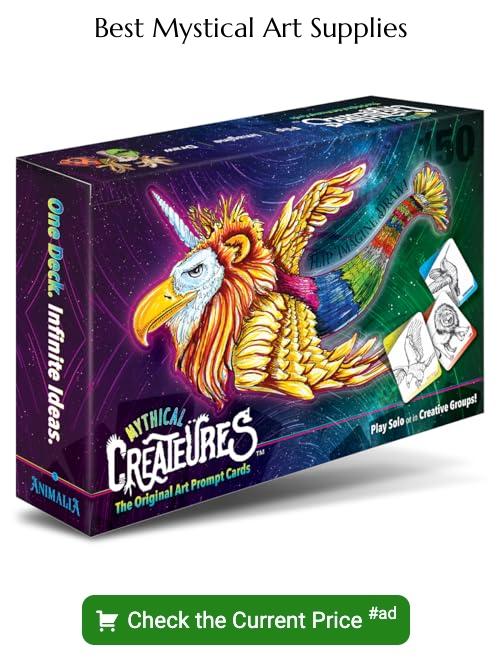Last updated on
Dive into the world of mystical painting ideas because they possess the unique ability to transform ordinary spaces into ethereal, enchanting realms.
I’ve designed unique illustrations for these ideas. I hope you get inspired!
Diving into the world of mystical painting can be both exciting and intimidating. With a cosmos full of familiar ideas, it can sometimes get overwhelming where to begin.
This article is here with a refreshing twist to shake things up. While an array of established concepts will be revisited, the primary aim is to introduce a riveting roster of unique ideas, crafted for exploration and inspiration.
An infusion of fresh perspectives awaits your canvas; it’s time to let your brushes loose. Resources for existing concepts will be conveniently located at the end of this feature.
Buckle up, let’s delve into these new waters and see what magic we can create together.
Cosmic Mysteries Translated to Canvas
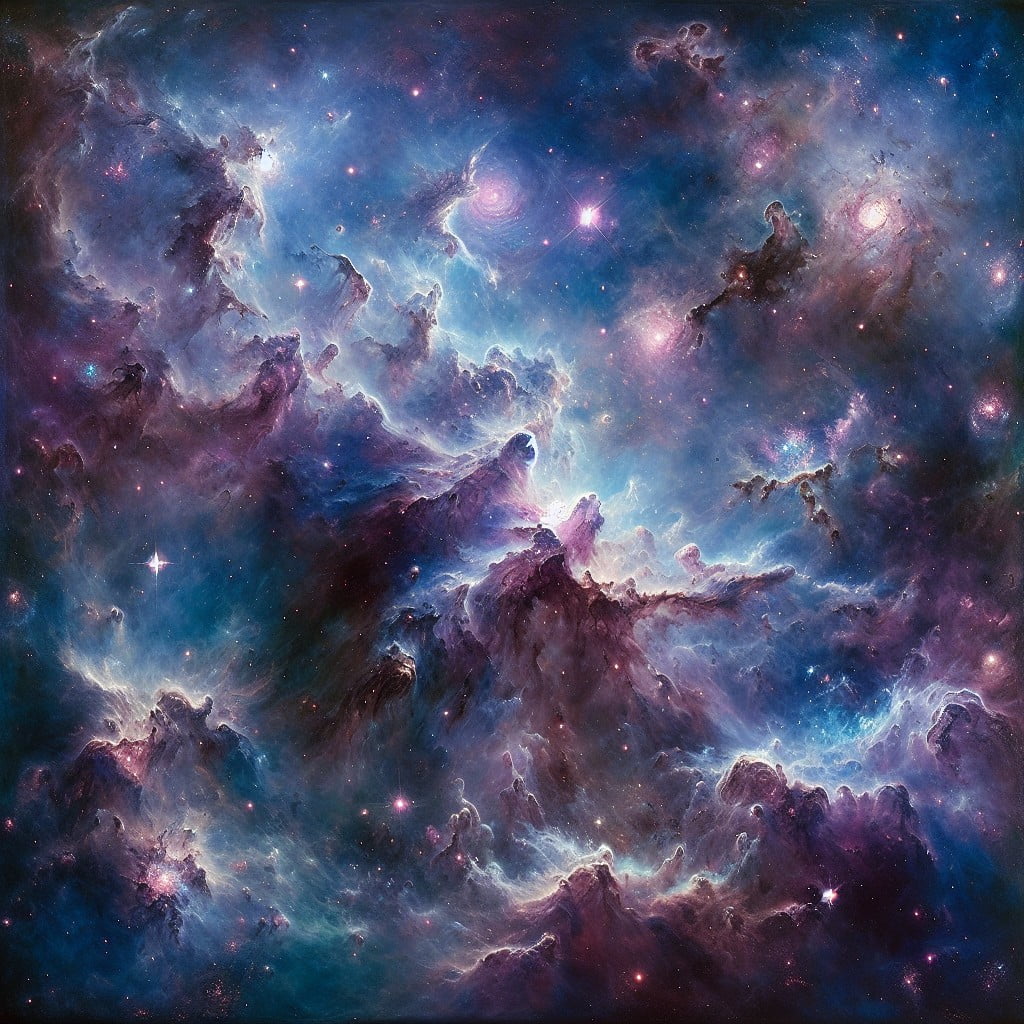
Infinity and beyond, not just a catchphrase. The cosmos, with its swirling galaxies, vivid nebulae, and sparkling stars, offers a plethora of creative inspiration. When rendering these galactic mysteries onto canvas, certain techniques prove to be effective:
1. Experiment with color gradients: Cosmic beauty lies in their surreal color transitions. Start with a darker shade and gently blend in lighter hues to mimic the infinity of space.
2. Sponging technique: Create starry landscapes with a sponge lightly dipped in white paint. Press strategically on your canvas for radiant constellations.
3. Nebula swirls: Twirl different hues together using a dry brush to replicate nebulae. Their cloudy, swirling nature is a captivating art feature.
4. Use of black: Remember, in space, black is also a color and carries depth.
5. Stencils: Employ stencils for perfect celestial bodies or alien spacecraft for the extraterrestrial touch.
By embracing these techniques, you can create vast, enthralling cosmic landscapes inside your home, transforming simple spaces into interstellar masterpieces. The cosmos is vast and the inspiration it provides endless, just like the possibilities of your art.
Alchemy and Art: The Mystical Connection
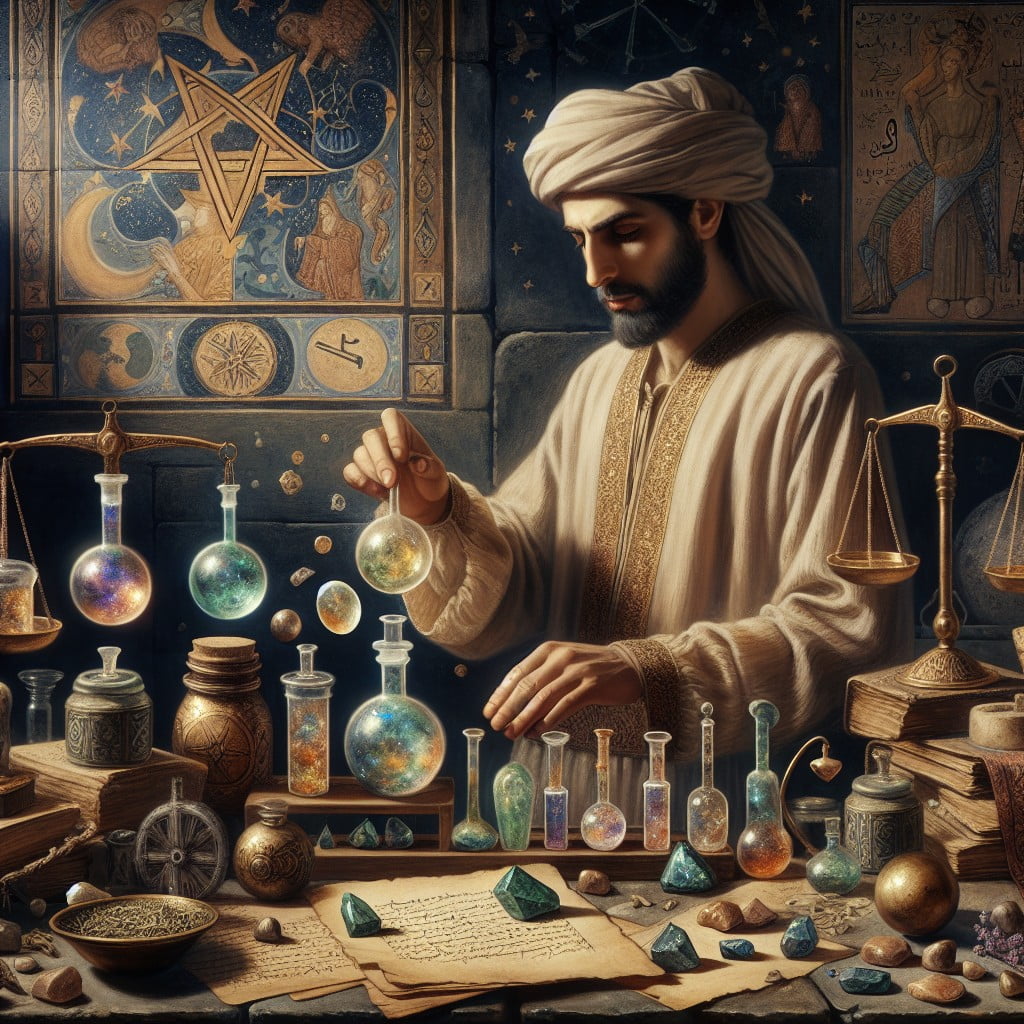
Embracing alchemy in art is about more than depicting cryptic symbols or medieval laboratories. It’s an exploration of transformation, the journey from base materials to a masterpiece – not unlike turning lead into gold.
The Centrality of Metamorphosis: At the heart of alchemy is change. Just as a canvas transforms with each stroke, so does a base metal in the quest for gold. An understanding of this process can add depth to your artwork, offering new layers of meaning.
Elemental Symbology: Earth, air, fire, water – each has its place in alchemical study, and each can be represented in turn. These can add a mystic pull and deep symbolism to your artwork.
The Magnum Opus: The creation of the Philosopher’s Stone is the ultimate goal in alchemy, and what better metaphor for the completion of a body of work? This can serve as a thematic underpinning for your entire oeuvre or for individual pieces.
Color Symbolism in Alchemy: Be it the Black Phase, White Phase, Yellow Phase, or Red Phase, each color in alchemical work holds intrinsic significance. Incorporating these into your palette can provide a rich, symbolic depth to your paintings.
The Spiritual Undertones: Lastly, alchemy isn’t all physical change. It’s also about spiritual growth and inner transformation, themes that can resonate powerfully in art. These universal themes can subtly immerse your audience in the mystical journey unfolding on your canvas.
Twilight: Painting The Space ‘Tween Wake and Sleep
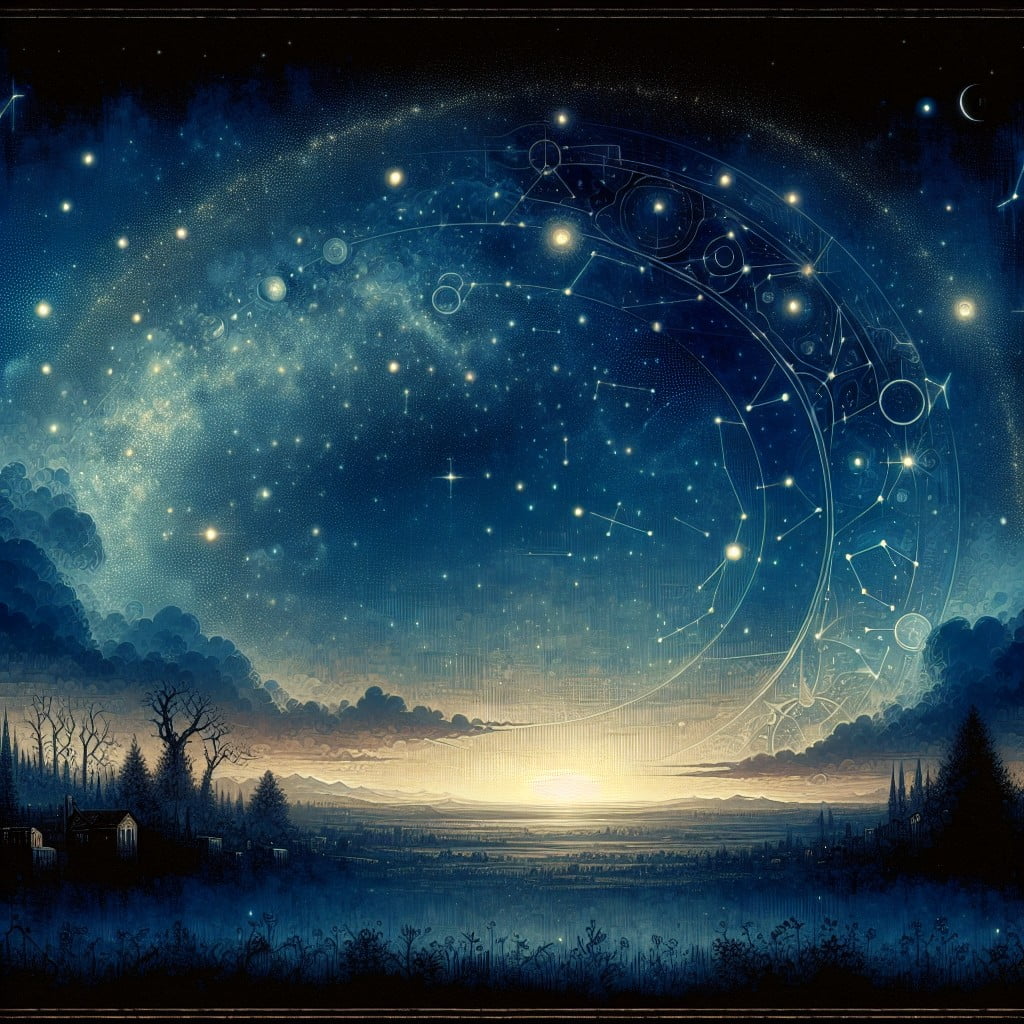
In capturing the mystical quality of twilight, consider the transient interplay of light and darkness. This ephemeral moment, where day surrenders to night, offers an array of hues, from fiery oranges and tranquil blues, to shadowy purples and grays.
To firstly capture this magic in your painting, attention should be paid to the sky. Try to mimic the atmospheric dispersion of light by incorporating gradients instead of block colors. Shades should blend seamlessly into each other to convey the gradual transition.
Secondly, consider negative space and the silhouette effect. The setting sun casts long, dramatic shadows which add depth and allure to your painting. Objects in the foreground should be darker to provide a stark contrast against the lit sky.
Lastly, the reflective properties of twilight. Bodies of water or glossy surfaces can be exploited to add a dimension of reflectivity. Pay heed to the color of the light being reflected, and adjust your palate accordingly.
Remember, the charm in painting twilight lies in capturing the fleeting beauty of the moment, which proves that mystical does not always mean arcane or concealed. It sometimes hides in plain sight, in the transition ‘tween wake and sleep.
Painting Portals to Other Dimensions
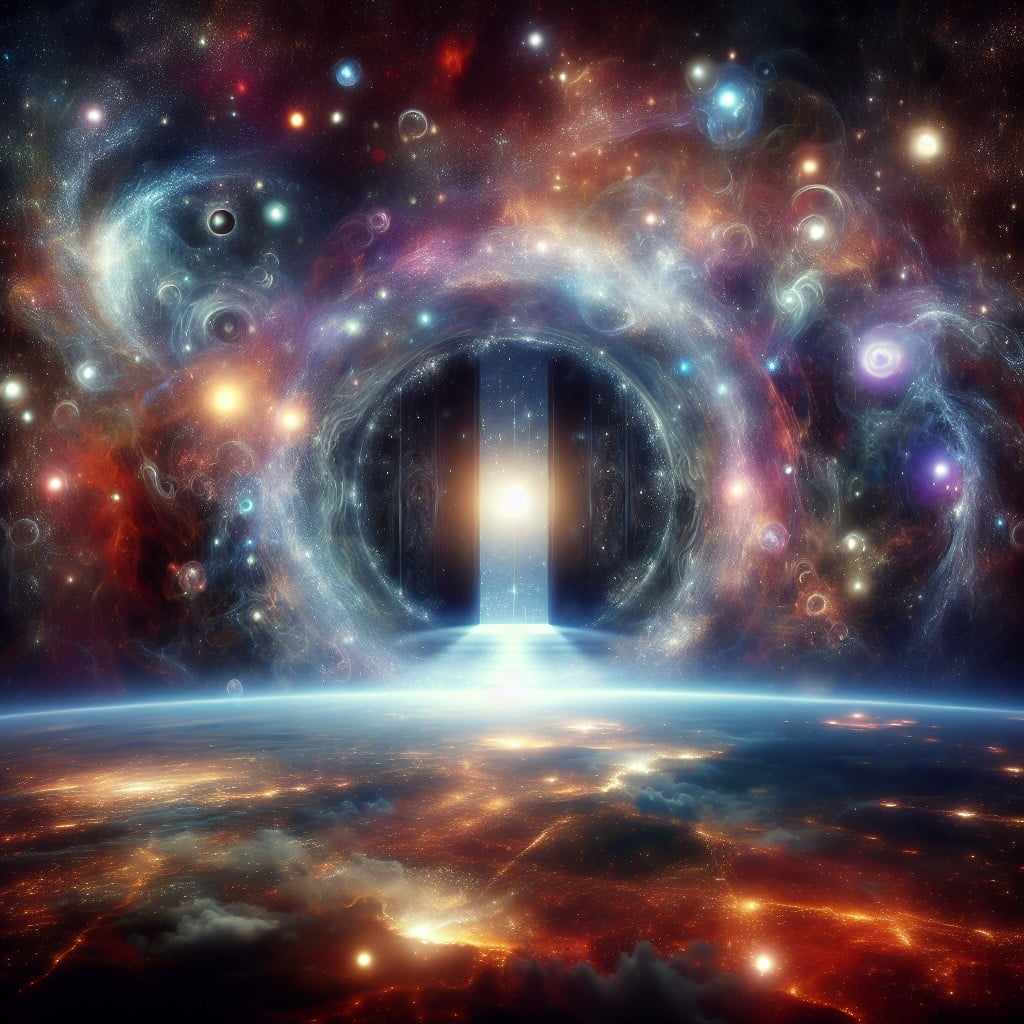
Transcendent art can often act as gateways, enticing the viewers to step in and travel to unseen spectrums of reality. To achieve this, several elements are crucial to consider.
1. Color Use:
Leverage color to evoke emotion and tease the senses. Lush, vibrant hues could illustrate paradises yet unseen; while monochromatic schemes might depict stark, ethereal landscapes.
2. Perspective:
Manipulate perspective to challenge the conformity of 3D space. Pushing the boundaries of depth perception can create an illusion of a dimension within the canvas itself.
3. Abstract Images:
Invent new shapes, structures or entities authentically. Unfamiliar abstract images prod the viewers to ponder, provoking a sense of mysterious otherworldliness.
4. Size and Placement:
Your artistic elements could become smaller as they venture deeper into the painting, enhancing the illusion of distance and depth.
5. Light and Shadow:
Experiment with light sources and casting shadows. These elements help set an ambiance, impacting perceived spatial depth and inviting viewers to explore the canvas’ depth.
6. Texture:
Texture enhances the sense of reality within the pseudo canvas world. It encourages tactile exploration, pushing the illusion of a touchable alternate dimension.
Remember, each canvas is a unique universe. Let your imagination run beyond the constraints of reality to create engaging dimensional portals.
The Esoteric Connection of Colors
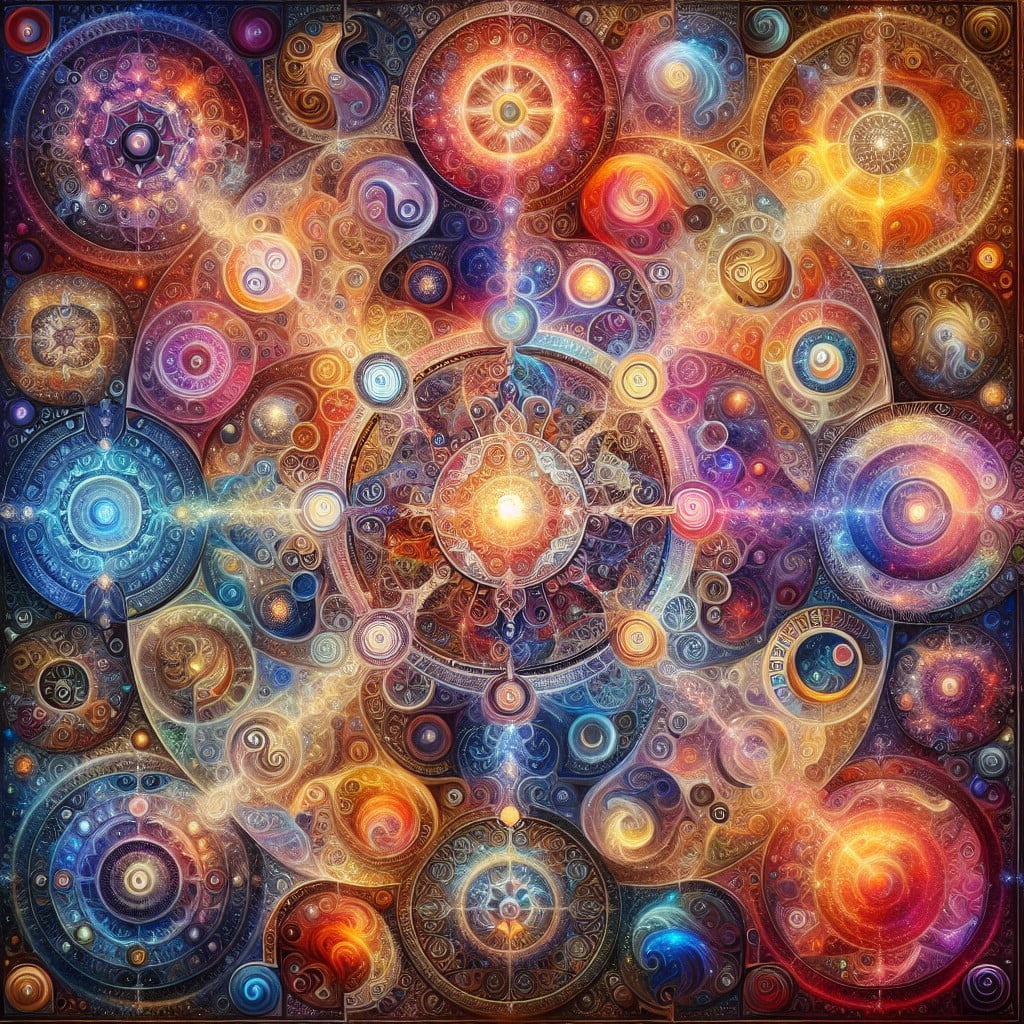
Colors play a crucial role in esoteric art, each evolving with its own symbolism.
Red is often seen as the color of energy, passion, and desire. It symbolizes a balanced mind, capable of making decisions with intuition.
On the other side of the spectrum, blue is associated with tranquility and wisdom, promoting peaceful and introspective feelings. It’s a patron for spiritual cleansing and deep understanding.
Yellow represents knowledge and learning, used to stimulate mental process, and aid in establishing new ways of thinking.
Green, the color of nature and growth, indicates connection with natural wisdom and healing energies.
Finally, purple symbolizes spiritual growth, and is often used to discover the unknown, and uncover deep, hidden truths.
By understanding these associations, artists can manipulate colors to communicate profound mystical ideas, creating a more immersive, enlightening experience for the viewer.
Elemental Energies in Art
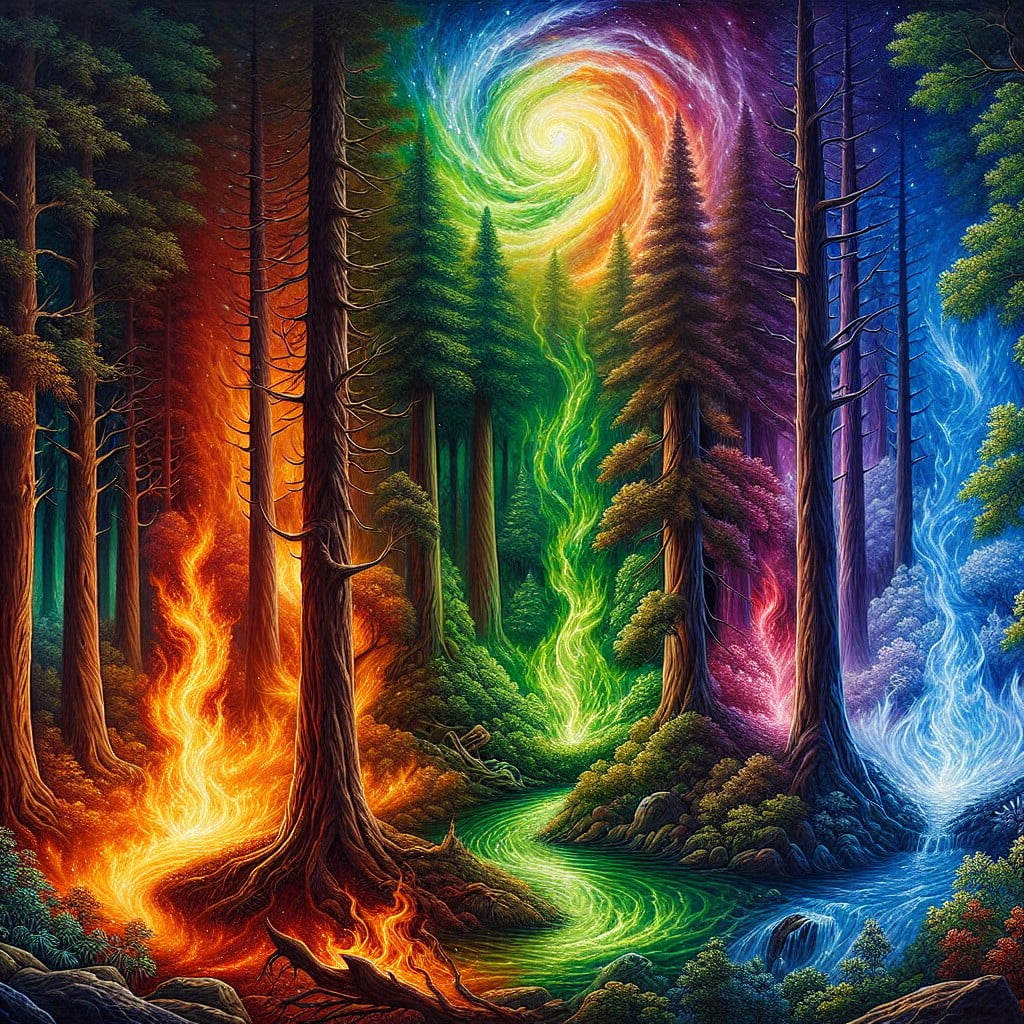
Each element – fire, water, earth, air, and spirit – corresponds to specific energies and emotions, lending a distinct aura to your artwork. Using this symbolism can help create uniquely vibrant pieces.
1. Fire: Known for its passionate and dynamic energy. Emphasize this element with warm hues like red or orange which echo its energy and movement.
2. Water: This soothing element often signifies emotion and intuition. Cool blues and rolling wave patterns are ideal for representing this element.
3. Earth: Stability, grounding, and fertility are key traits of the earth element, best illustrated with warm browns and tans or scenes of lush nature.
4. Air: Represent freedom and inspiration using light pastel colors. Incorporating images of open skies or floating clouds provide tangible connections.
5. Spirit: The fifth element symbolizing the divine or the universe. Depict this using cosmic imagery or shades of purple which often represent spiritual or mystical energy.
An effective blend of these elements and energies can result in a deeply resonating piece of art.
Harmony in Chaos: Abstract Spiritual Art
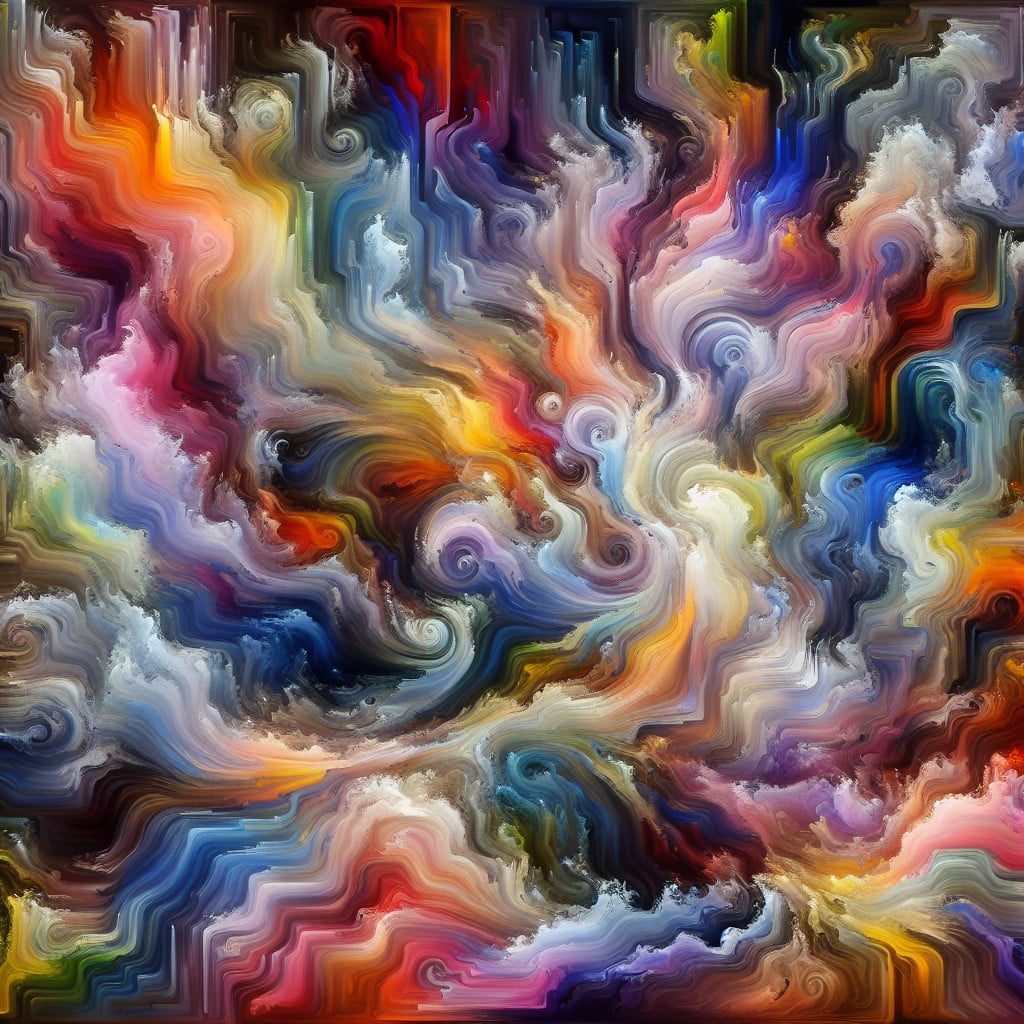
Delving deeper into abstract spiritual art, one understands it is not all about precise forms and meticulous lines. It thrives on the spontaneity of the artistic spirit, allowing for the expression of transcendent truths in a state that outsiders might perceive as chaotic.
1. Expression of Inner Energy: Rather than being constrained by realism, this form of art is driven by the energy of the moment. The artist’s brushstrokes are manifestations of their inner thought processes, which may portray a chaotic scene on the canvas but are deeply harmonious at a spiritual level.
2. Evoking Visceral Responses: The raw, unstructured aspects of abstract spiritual art can heighten emotional responses. These seemingly chaotic patterns have a potent ability to stir the observer’s soul and evoke individual interpretations.
3. Use of Colors: Bold, contrasting shades are frequently used in such paintings, mimicking life’s constant ups and downs. They symbolize our existence, which often swings between moments of tranquillity and periods of chaos.
4. Symbolism: Symbols are key to decoding the essence of abstract spiritual art. They help bring a sense of order to the apparent disorder, guiding viewers towards underlying spiritual messages.
5. Meditation Through Art: For many artists, painting abstract spiritual art serves as a meditative process. The chaos on the canvas mirrors the turmoil within, but as the piece progresses, a profound feeling of peace and understanding emerges.
In essence, abstract spiritual art beautifully illustrates that underneath apparent disarray, deeper spiritual harmony exists, resonating strongly with viewers and engaging them in a unique, immersive experience.
Lost Civilizations: A Mystical Journey Through Art
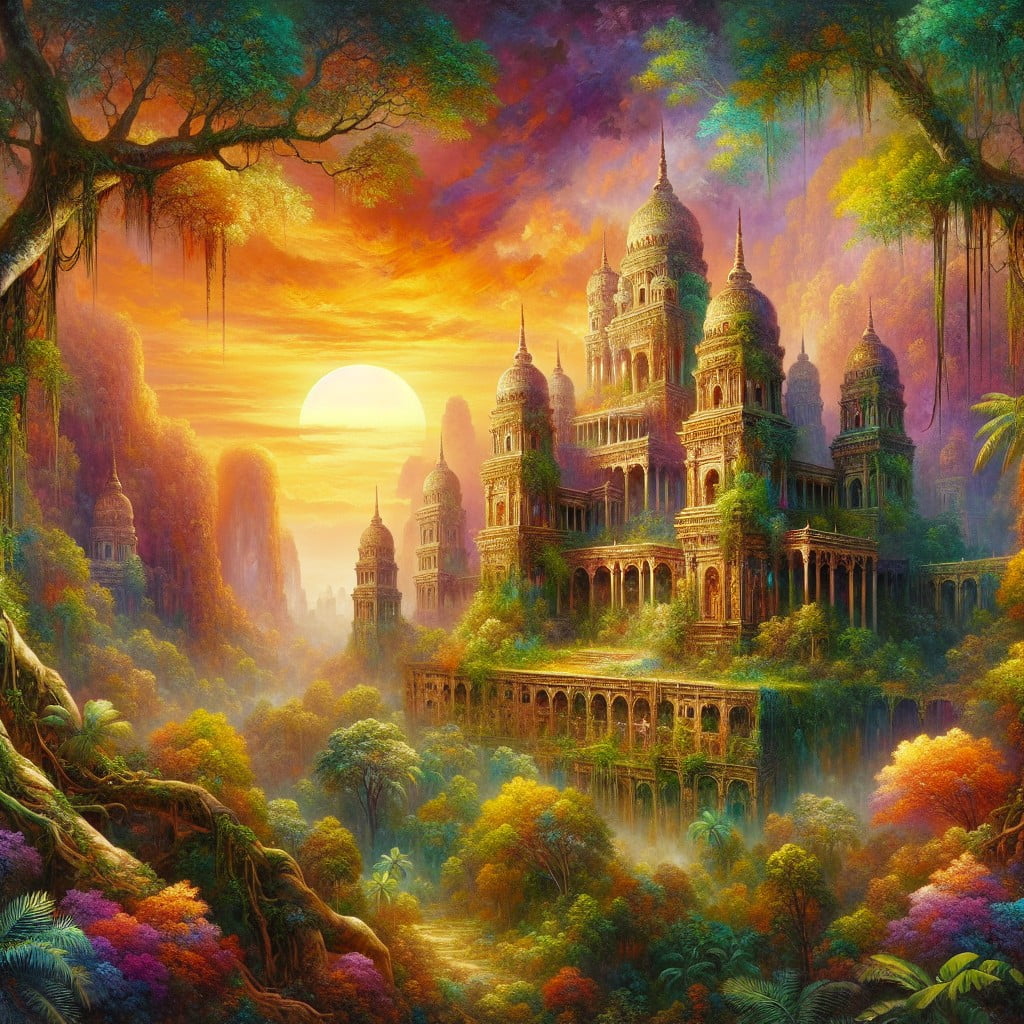
For starters, let’s take a trip back in time and explore the ruins of ancient Rome, Egypt, and Greece. Visualize grand columns, majestic pyramids, and stout sphinxes – otherworldly edifices from the annals of history. It’s not merely about drawing or painting these time-honored structures, but about capturing their essence, the mystical energy they radiate.
Next, consider the creation myths and legends pivotal to each of these societies. Incorporating symbols and figures pertinent to these stories adds another layer of intrigue. Hieroglyphs, ancient Greek inscriptions, or even Norse runes can be artistically woven into the backdrop or embedded within other elements of the painting.
Strongly consider your color choices; they play a key role in evoking specific moods and emotions. Earthy tones can suggest an antiquated, rustic aura, while vibrant hues can portray the richness and grandeur of the past.
Verse yourself in historical attire and mythical creatures, providing the painting with authentic characters and distinct charm. Experiment with realistic and abstract styles, blending them where appropriate.
The beauty of historical art is in its mystery. Opt for a level of ambiguity, letting the viewers interpret parts of the artwork. This fosters a deep interaction between the viewer and the art, creating a unique conversation that keeps them coming back for more.
Celestial Art: The Mysteries of the Galaxy On Canvas
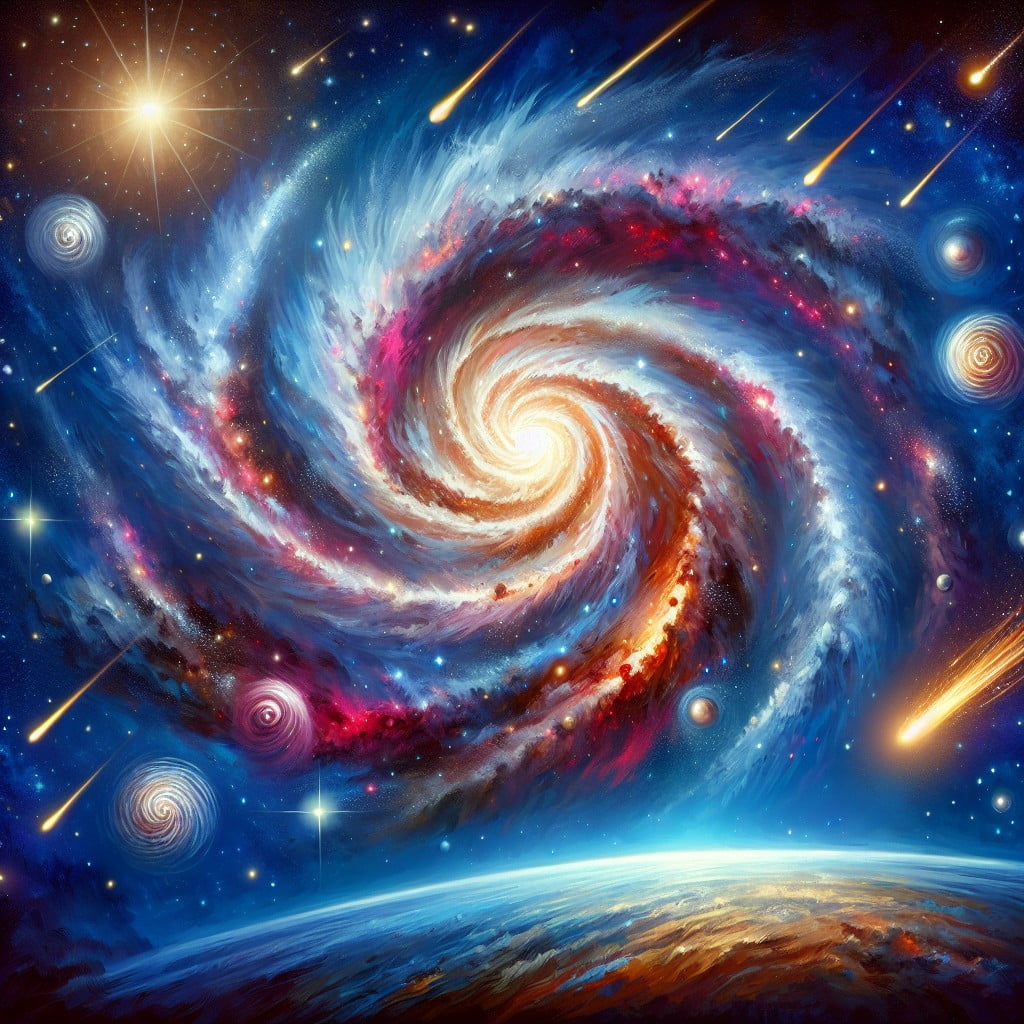
Delving deeper into the Cosmos, countless artists have reached out to the stars for inspiration. This form of mystical art captures the grandeur of celestial bodies, often combining realism with dreamlike hues to manifest the ineffable beauty of the universe.
1. Use of Colors: In celestial art, deep blacks and luminous whites create stark contrasts, simulating the darkness of space and illuminating stars. Varied blues and purples evoke a sense of otherworldliness and depth.
2. Nebulae & Galaxies: Nebulae, galaxies, and star clusters provide fantastical subjects. Their complexity and nebulous forms invite unrestricted interpretation and a unique fusion of colors and shapes.
3. Use of Technique: Techniques like splattering and sponging can replicate the random, chaotic beauty of star-strewn sky. For a smoother, dreamier effect, blending is key.
4. Mythical & Symbolic Elements: Often, celestial art incorporates zodiacal signs, gods and mythological figures associated with the Cosmos, infusing deeper symbolic meaning.
5. Scale & Perspective: Expansive canvases can give a sense of the vastness of space, while strategic positioning of celestial bodies create a perception of near and far. Perspective is powerful in conveying depth.
An awe-inspiring type of mystical art, celestial painting allows artists to imagine and explore the never-ending mysteries of the universe one brush stroke at a time.
Cryptic Scripts and Ancient Symbols in Painting
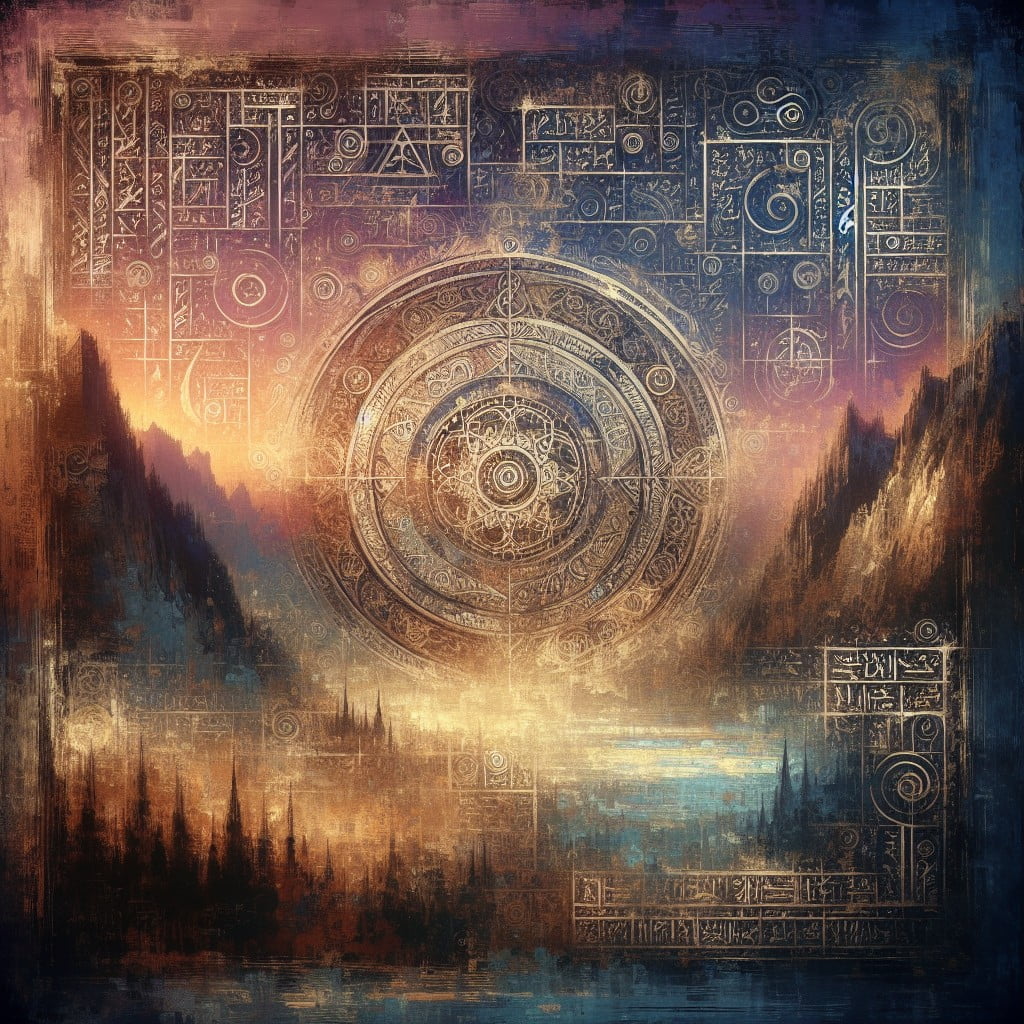
Delving into the ancient world, artists often incorporate cryptic scripts and symbols into their work, inviting viewers into a realm of mystery and profound meaning. These symbols could be anything from Egyptian hieroglyphs, Celtic runes, to ancient Chinese calligraphy – each carrying a rich backstory.
For instance, the eternity knot, a significant symbol in Buddhism, signals eternal wisdom and compassion, adding depth when incorporated into paintings. The ancient Egyptian Ankh symbol represents life and immortality, its inclusion often hinting a deeper philosophical context. Greek geometry, with its intricate patterns, might symbolize harmony and unity, infusing an extra layer of interpretation to the artwork.
Furthermore, scripts, such as the mystic Chinese ‘Cloud Script’, can create an atmosphere of enigma, luring the audience to decode their meanings. For aspiring artists, research into various symbols and scripts can offer a hidden language to express complex ideas, making art an adventure not just for the creator, but also for beholders.
Seasons of Magic: Enchanted Nature Scenarios
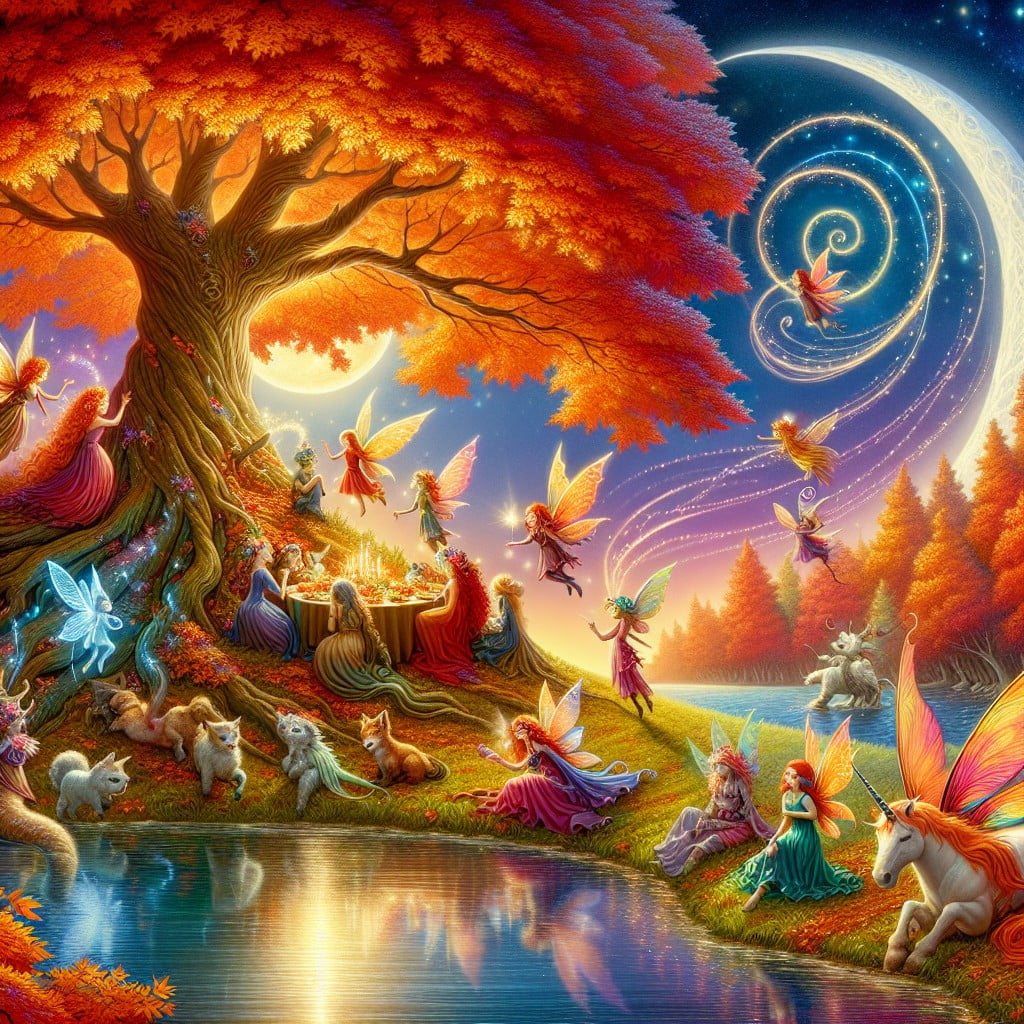
Chronicles of the year unfurl through art, capturing each season’s distinct mystique. Delve into the Spring’s rebirth, with buds erupting into life and fauna stirring from their slumber.
Paintings splash with vibrant greens and bursts of pastels echoing blossoming flowers.
Summer’s warmth permits an entirely different palette. Brilliant blues for sunny skies and enjoyable beach scenes washed with sandy yellows and cool ocean blues, highlighting the period of abundance and vitality.
Transition into Autumn, a time of harvest, serenity, and change. Art at this time brims with golden hues, reds, and oranges reflecting foliage’s transformation, often juxtaposed with a crisp, clear blue sky.
Lastly, the Winter casts a magical spell as the land slumbers, inspiring artwork showcasing stark contrasts between white snow-covered landscapes and the dark outline of barren trees or the soft glow of distant lit windows.
Each season brings along a magical tale to tell, masterfully captured on canvas through colors and contrasts. Various elements like weather patterns, flora, fauna, and human activities characteristic to those seasons can add depth and life to these enchanted nature scenarios.
Create a visual narrative, expressing the passing of time and the interplaying magic of nature.
Unraveling Dreams Through Mystical Art
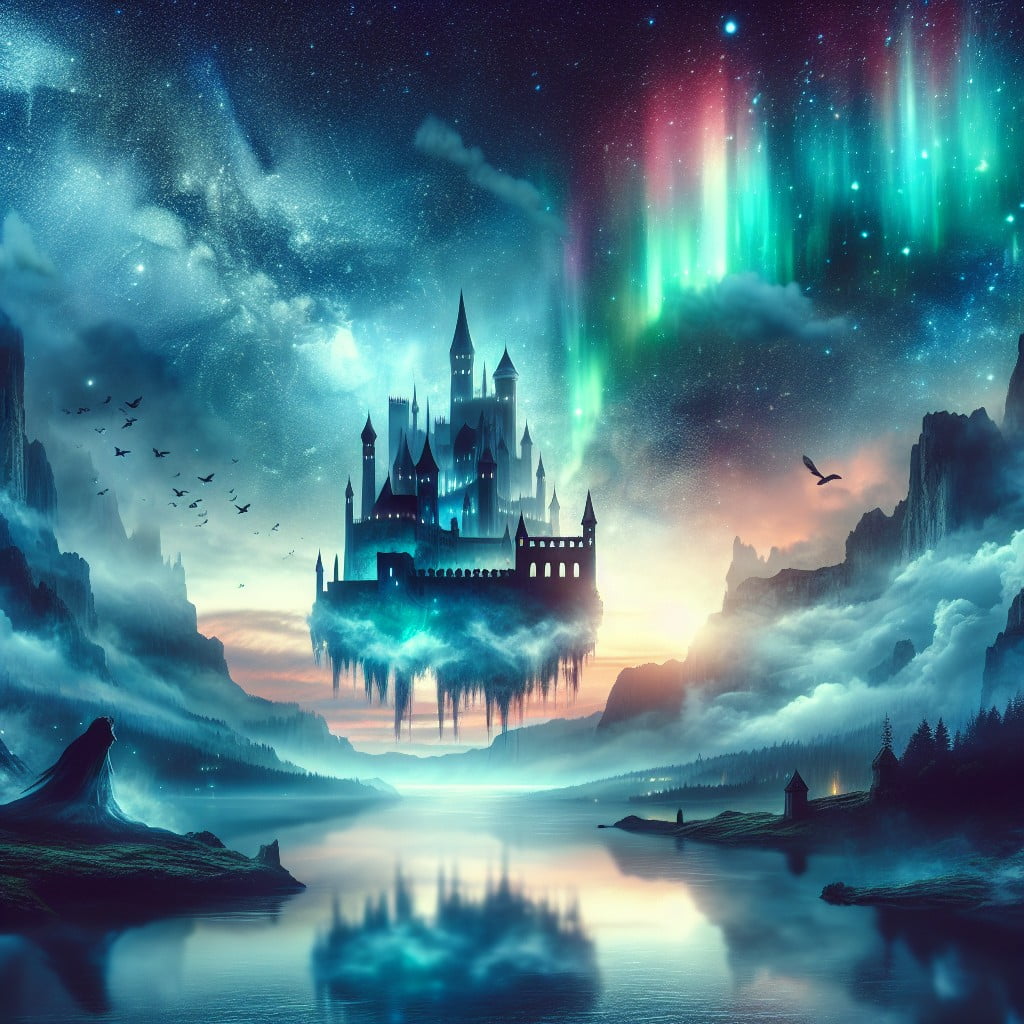
Delving into the world of dreams offers an unexplored landscape for artists to dive into. This deep well of nightly visions, often rich with symbolism and profound meaning, adds a unique layer to artistic expression.
1. Dream Diary: Keeping a record of dreams is a practice that can provide a wealth of material for a mystical painting. Symbols, colors, and emotions captured in these narratives form a perfect basis for artwork.
2. Abstract Imagery: Dreams often are not linear or realistic, which allows for more abstract work, blending unique shapes, subjects, and colors in unprecedented ways.
3. Emotional Exploration: Dreams tend to stir deep emotions. Art provides an excellent avenue to explore and express these emotions.
4. Symbolism: Artists often explore recurring symbols in their dreams. These can become central figures or themes in artworks, increasing their depth and relevance.
5. Surrealism: Capitalizing on the dreamlike, unreal quality, artists can experiment with surreal compositions, bending reality in captivating ways.
The enchanting world of dreams provides an almost limitless well of inspiration. The exploration of this inner universe fosters deeply personal, evocative, and mystique-filled pieces that captivates the viewer and awakens their own dream-filled worlds.
The Arcane Beauty of Hidden Realms
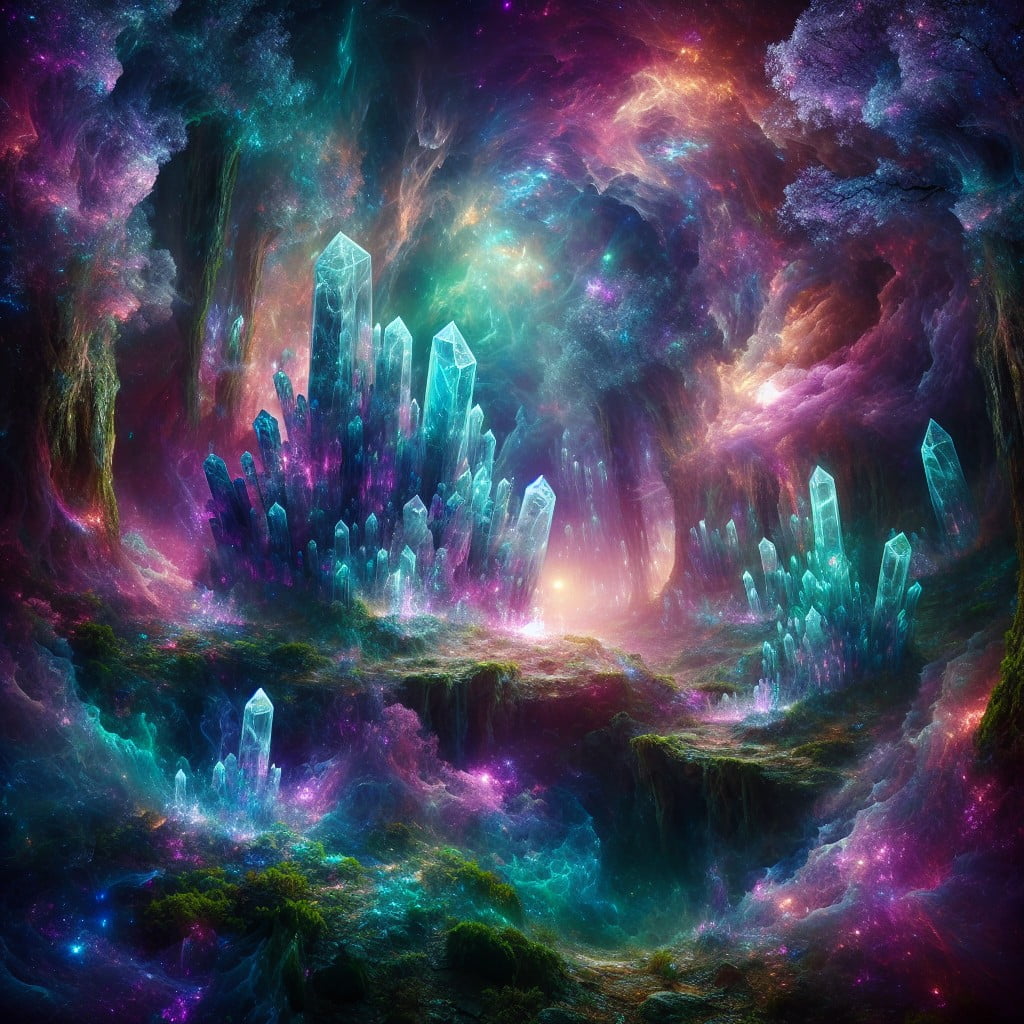
Exploring hidden realms through the optic of artistry often results in fascinating paradoxes. One such intriguing perspective includes viewing the invisible or non-physical spaces that exist beyond our realm of perception. Therefore, understanding these unseen facets calls for creativity and a fertile imagination.
In the process of creating such mystical illustrations, artists frequently render potential depictions of ethereal planes and spiritual dimensions. Some of these could represent nebulous astral worlds, elusive dreamscapes, or lost civilisations, conceivably submerged under mountains or ocean floors. Such interpretations provide not just an absorbing visual experience but also engage the viewer’s imagination in unraveling these arcane mysteries.
Partially opaque pigments to produce ghostly effects, complex layers of transparencies to suggest multidimensional space, or intense contrasts to bring forth hidden elements are possible techniques applied in the creation of these mystical canvases. These not only provide texture to the artistic representation but also deepen the overall mystery and attract viewers to delve into and understand these hidden realms.
Brushstrokes From Beyond: Contact With the Divine
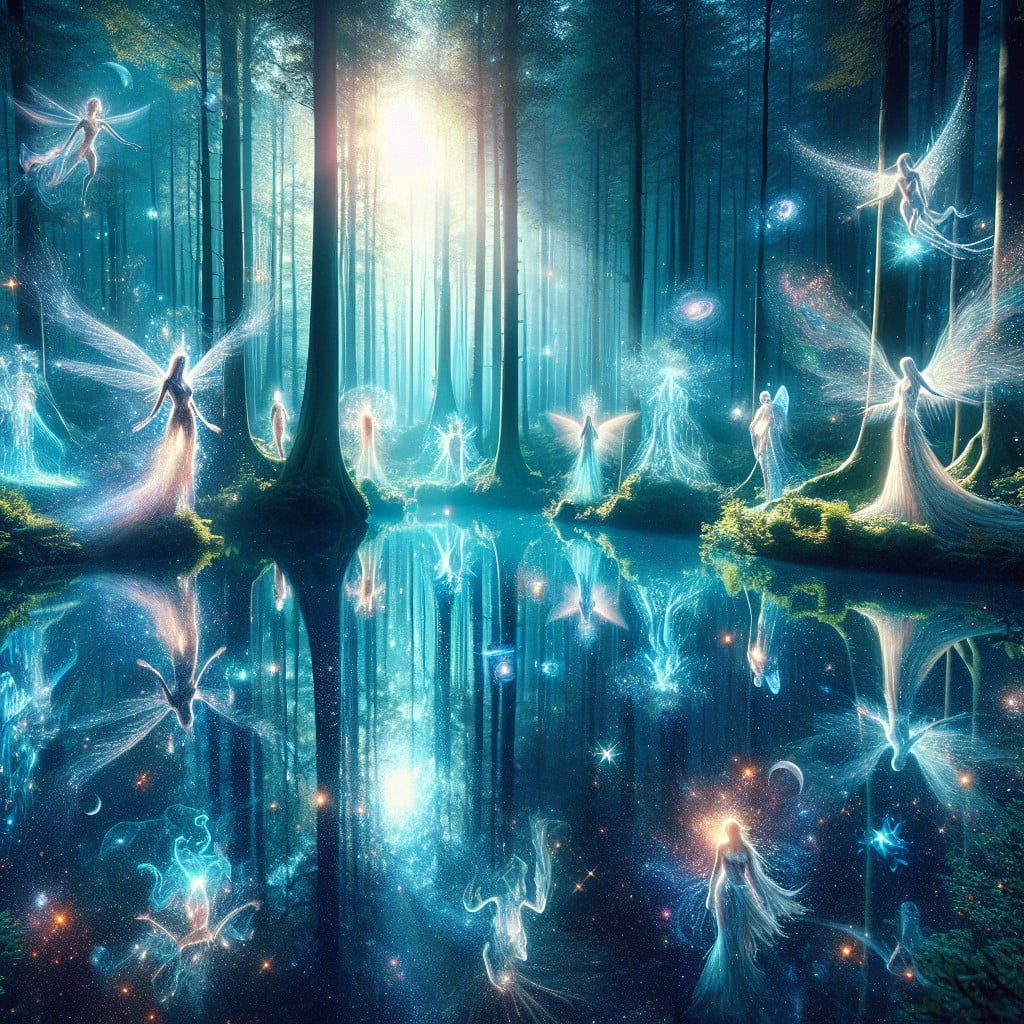
Creating art operates on myriad levels, ranging from pure aesthetic pleasure to profound other-worldly experiences. When executing divine-focused designs, several concepts are worth contemplating.
A. Presence of Symbols: Divine depiction often incorporates symbols, each carrying unique meanings, such as a lotus for spiritual awakening or a dove for peace.
B. Choice of Colors: Tones hold significant roles. Gold signifies spiritual currency, white portrays purity, while blues and purples link with heavenly spheres.
C. Emotion Through Technique: The brushwork must emulate the energy of the divine. Soft, blended strokes evoke tranquility, while dynamic, expressive techniques embody divine power.
D. Channeling Divine Energy: It’s pertinent to meditate or engage in mindful activities before the creative process, to channel higher energies through the artwork.
E. Sacred Geometry: Shapes also articulate divine essence. Circles represent wholeness and eternity; spirals, the journey of life and evolution.
By acknowledging these points, your art can become a divine dialogue, where every line, shape, and hue breathes life to spiritual sentiments.
Duality in Art: Dark and Light Unveiled
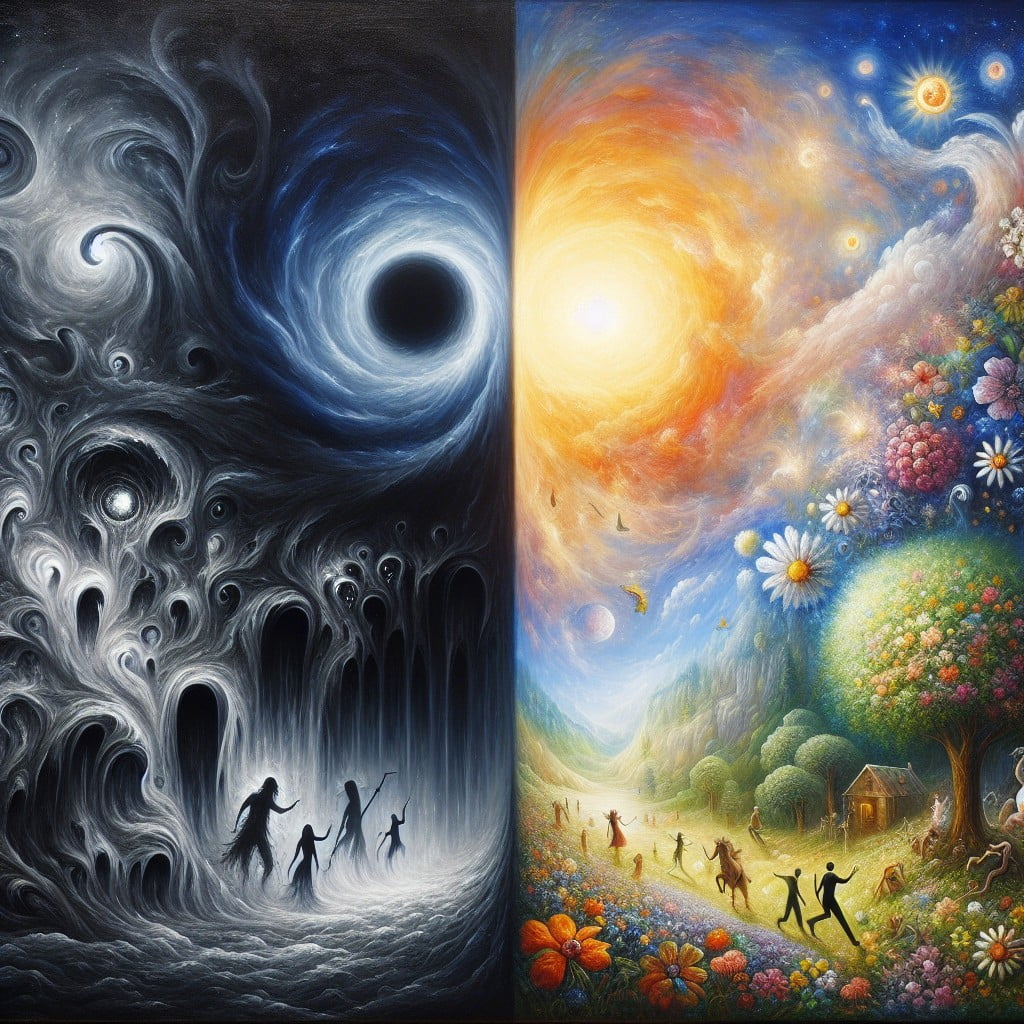
Exploring duality in art requires a deep understanding of the contrasting forces that mold reality: dark and light, good and evil, life and death. These oppositions can be beautifully visualized using a myriad of artistic techniques.
1. Contrast Use: Employing facet by facet the darker and lighter hues can be a potent way to embody the dichotomy.
2. Emotional Weight: Artistic interpretation of emotions can maximize the impact of dark (sad, daunting) and light (joyful, uplifting) elements.
3. Symbolic Imagery: Icons and symbols, such as the Yin-Yang or sun-moon, can efficiently portray the balance between opposing forces.
4. Narrative Elements: A story, even abstractedly delivered, unfolding across the canvas can vividly illustrate duality.
5. Harmonization: The goal is not to isolate these opposites but to represent their necessary coexistence, the harmony in the chaos.
The chance to communicate complex concepts through art makes this theme both exciting and impactful for the artist and the viewer alike.
Ocean Depths: Subaquatic Mysticism
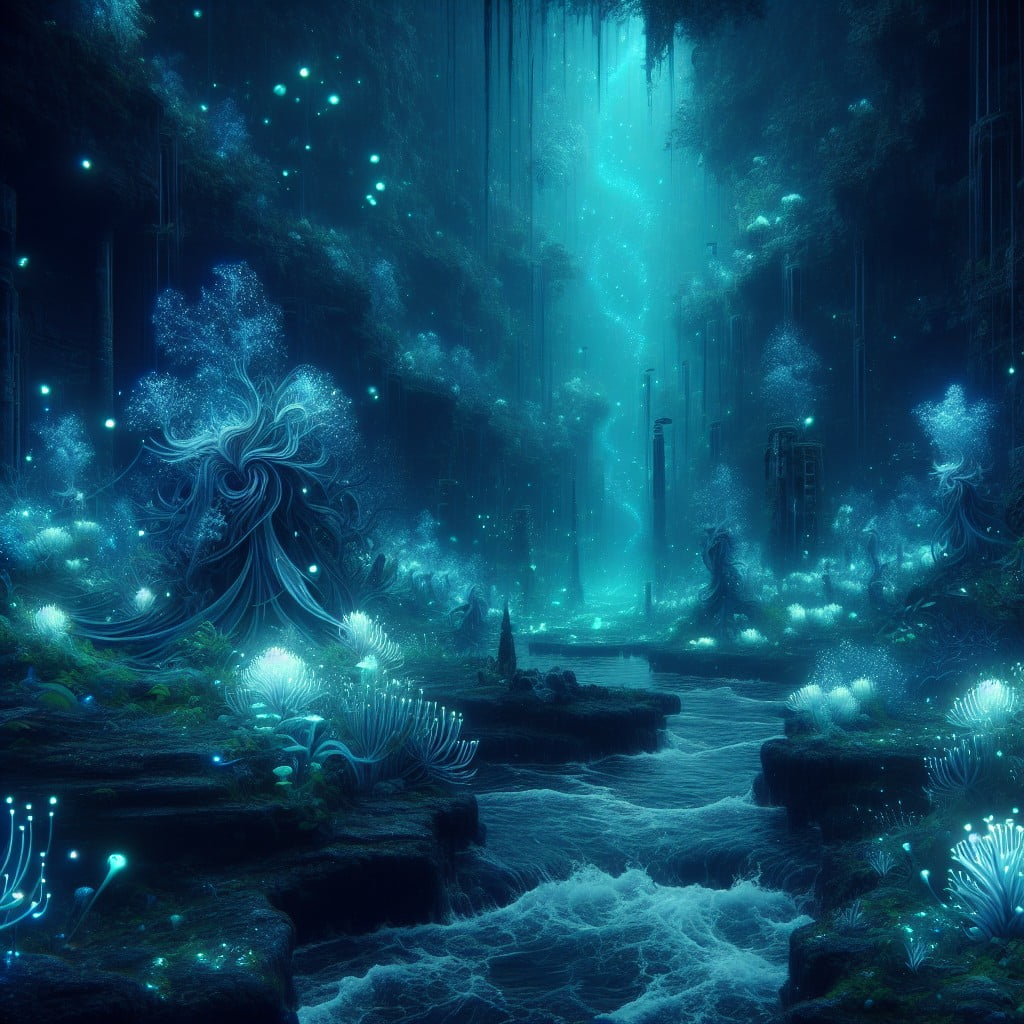
The vast, unexplored world beneath the ocean’s waves is a bounty of mystery, and an ideal conduit for evocative, emotionally-charged art. The ethereal serenity of the underwater realm has led many artists to undertake a journey of representation of its beguiling, sometimes haunting beauty.
- Deep Sea Creatures: Paintings often feature surrealistic portrayals of being from the deep. From bioluminescent organisms to colossal sea beasts, these figures in art breathe life into murky depths.
- Seascapes: The changing moods of the sea, from its tranquil elements to its tempestuous currents, invite exploration with a painter’s brush.
- Shipwrecks and Treasures: Crumbled remnants of the past and golden hoards lost to the ages, concealed in the silent ocean abyss, holds irresistible interest for the artist.
- Corals and Marine Flora: Artists can depict the awe-inspiring, vibrant colors and intricate, otherworldly shapes of coral reefs and marine plant life.
- Light Penetration: The depiction of filtered sunlight piercing the water’s surface, refracted and mirrored, adds a surreal and mesmerizing quality to aquatic scenes.
- Luminous Palette: The undersea world calls for a unique color scheme, often featuring hues of blues and greens with specks of vivid colors emerging from marine creatures and flora.
Embracing subaquatic mysticism in painting allows an exploration of the profound and enigmatic narrative of the unseen ocean realm. Each brushstroke delves deeper into uncharted territories, presenting a silent dialogue between the artist and the canvas that captivates the viewer, resulting in the creation of profoundly memorable pieces.
Exploration of the Mind: Psychedelic Mystical Art
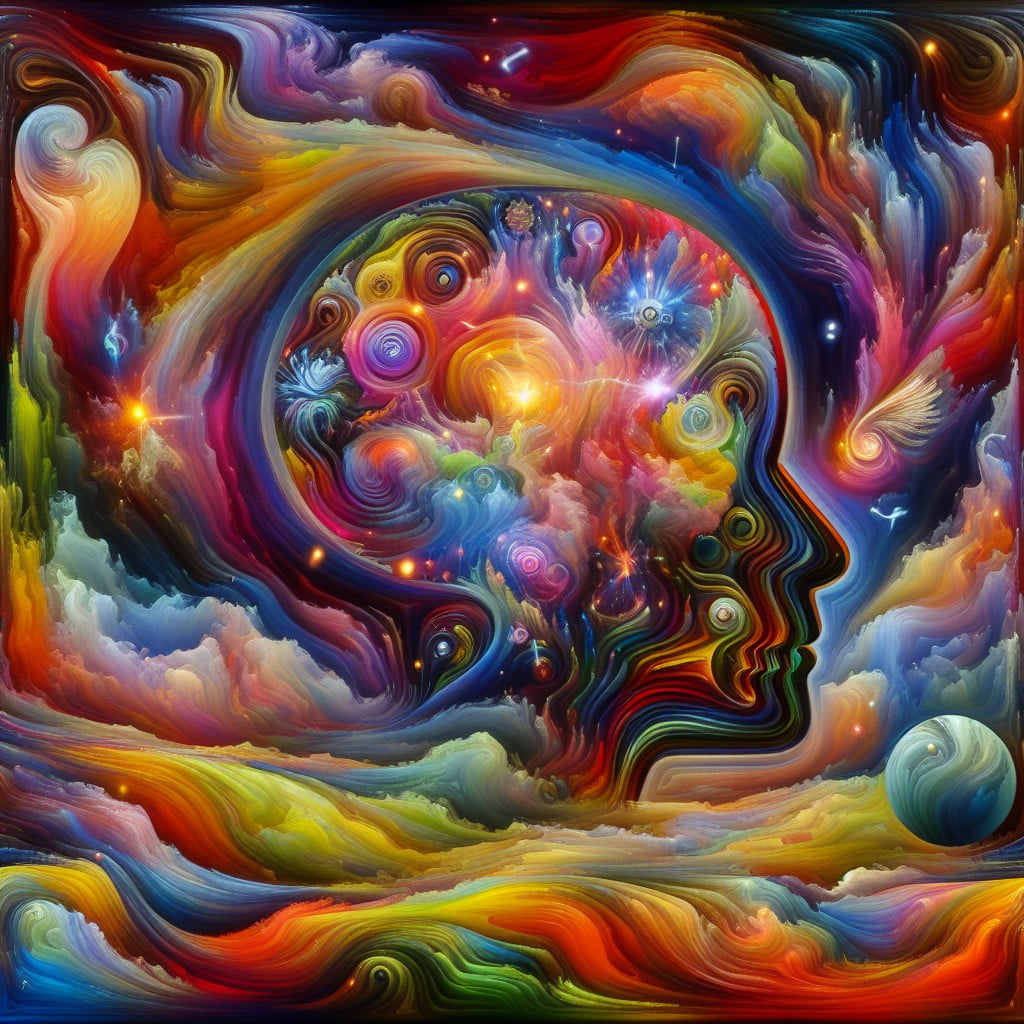
To fully appreciate the concept of psychedelic mystical art, one must delve into the depths and expansiveness of the human mind. This style often utilizes vibrant, contrasting colors and complex patterns, reminiscent of sensory experiences and mind states brought on by meditation or even psychedelic substances. The art created in this style often aims to express ineffable aspects of consciousness or pose questions about the nature of perception and reality.
1. Colors and Patterns: These are often bold and multi-layered, used to stimulate and captivate the viewer, inviting them into a profound, thought-provoking visual journey.
2. Visual Representation of Inner States: Psychedelic mystical art serves as a translation of the artist’s internal experience, a window into the unseen realms of the mind.
3. Consciousness and Perception: This art form can be representative of altered states of consciousness, offering visual interpretations of experiences typically out of reach of ordinary, wakeful states.
4. Spirituality and Growth: Through such exploratory self-expression, artists can convey profound spiritual insights or create spaces for introspection and personal growth within the viewer.
5. Connection and Universal Themes: Artists frequently lean towards concepts such as unity, the cycle of life and death, and transcendent love, tapping into universally shared such experiences.
Remember, while psychedelic mystical art might seem abstract, the hidden beauty lies in the very essence of exploration – inviting viewer engagement, contemplation, and personal interpretation.
Mythical Beasts and Legends Painted
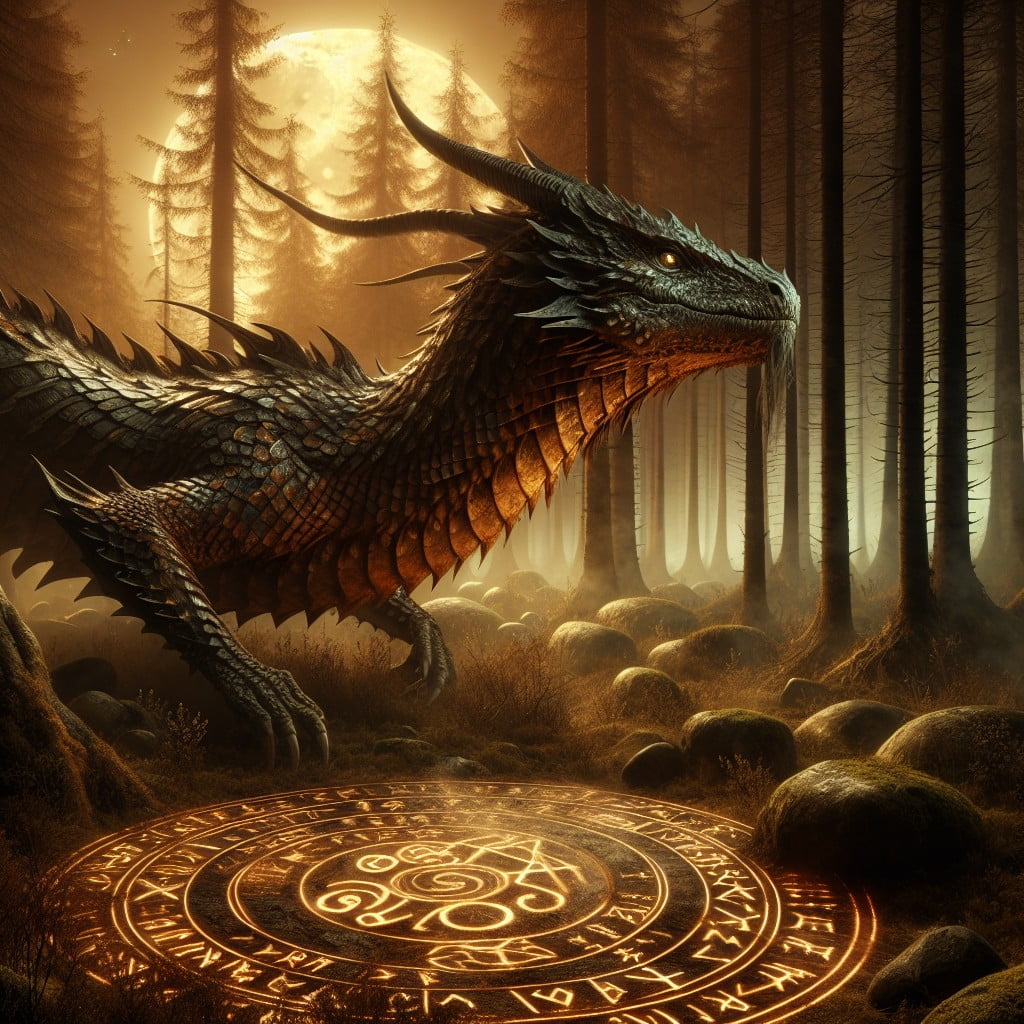
Delving into our collective cultural heritage, painting offers an expansive battleground for mythical beasts and legends to come alive. Exploring these ancient narratives can add depth and intrigue to your art. Here are a few concepts to consider:
1. Symbolism: Many mythical creatures were conceived to embody human virtues, vices, hopes, and fears. Depicting these creatures can imbue your artwork with layers of emotional resonance.
2. Cultural Significance: From Greek minotaurs to Japanese yokai, every culture’s folklore is uniquely rich. Using mythical creatures from specific cultures can infuse your work with diverse perspectives and narratives.
3. Visual Drama: Legends often involve epic battles, daring quests, or cataclysmic events. These elements can provide intense visuals and dramatic tension to your paintings.
4. Evoke Wonder: Mythical creatures can break the constraints of reality, igniting viewers’ sense of wonder and imagination.
5. Playing with Proportions: Larger-than-life beasts towering over landscapes, tiny fairies sheltering under leaves – skewing ordinary proportions can dramatically enhance the mystical atmosphere.
Experiment with these concepts and let your creativity flow, enabling age-old myths and legends to be seen afresh through your art.
The Fractal Universe in Art
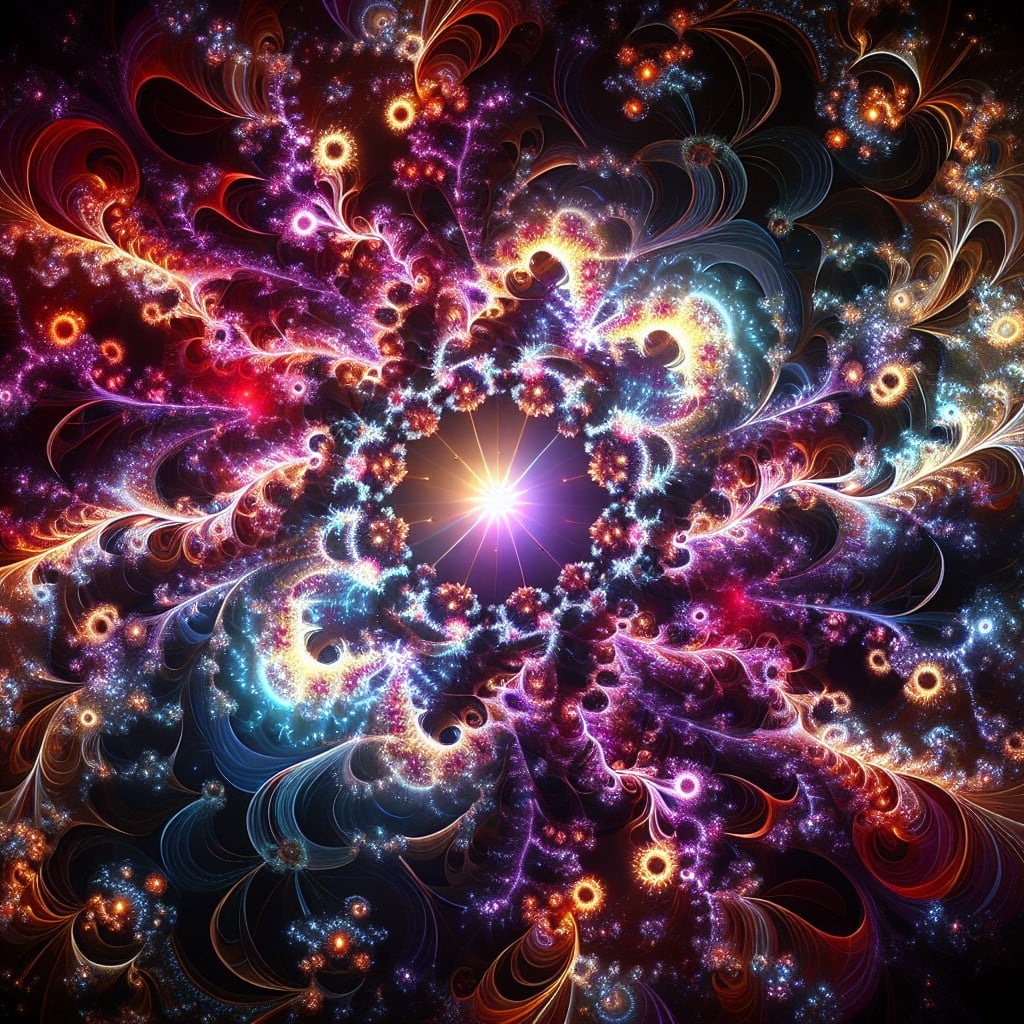
Fractals have a unique trait of exhibiting the same pattern, irrespective of the scale at which they are viewed. This concept aligns perfectly with the notion of the macrocosm reflecting the microcosm, a fundamental principle in numerous mystical traditions.
Here’s how to incorporate this into your artistic practice:
- Begin observing: Meditate on natural fractals like trees, coastlines, clouds, mountains and galaxies to gain inspiration.
- Experiment with techniques: Use your observations to mimic these intricate patterns through techniques like splatter painting, sponge painting, and marbling.
- Understand the Mathematics: While not essential, comprehending the mathematical concepts behind fractals can add an additional layer of depth to your work.
- Use of Colors: Utilize colors to depict energy or vibration harmonics that resonate with the cosmic patterns.
- Layering: Layering can help create depth, portraying how fractals repeat patterns on multiple levels.
Embracing the concept of fractal universe in your artwork can infuse it with an intriguing sense of mystery and cosmic connection which will captivate your audience.
Sacred Geometry: The Blueprint of Existence in Art
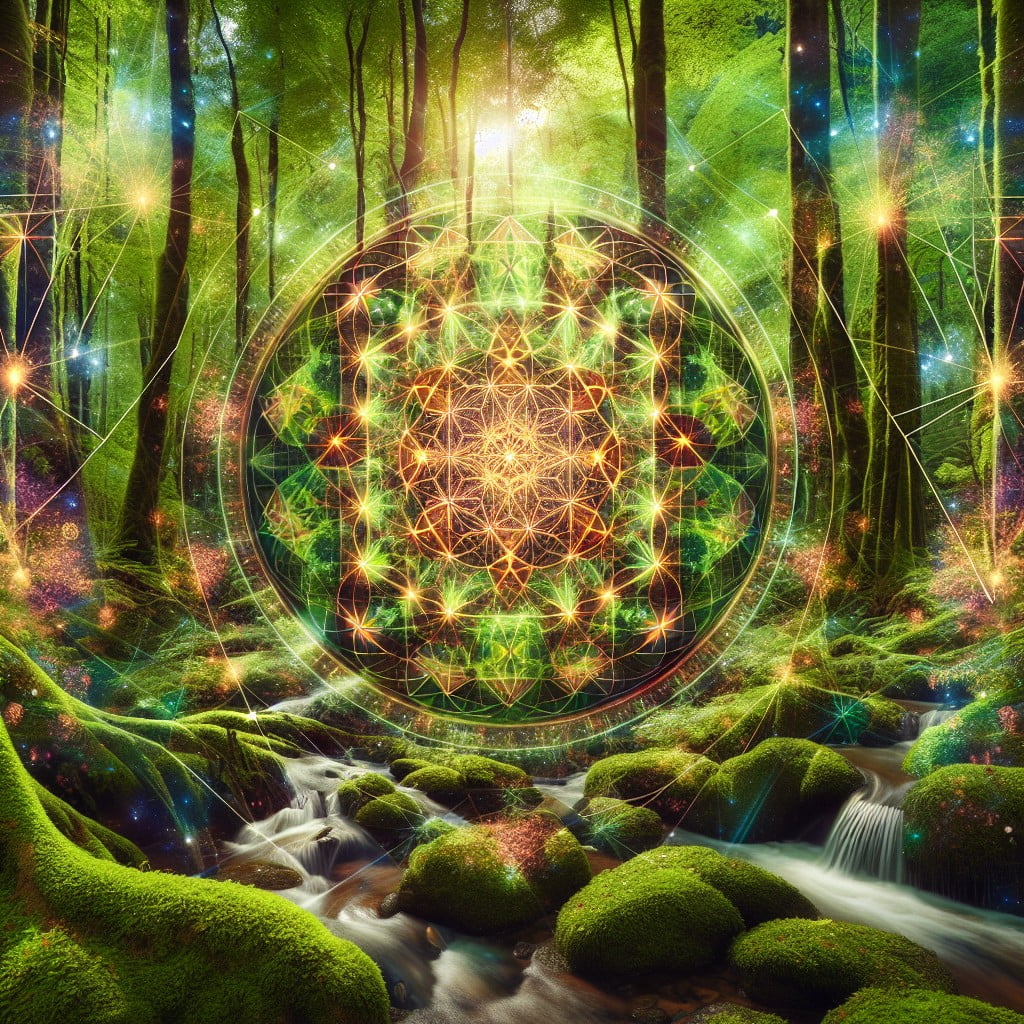
Drawing on ancient wisdom, artists often use the principles of sacred geometry. This mathematical approach to design, imitated from nature, provides a unique lens to showcase the mystical.
1. Essence of Geometry: Geometry, specifically sacred geometry, relates closely to the creation patterns seen in the universe’s design. It signifies balance and symmetry, and artists transcribing these patterns onto canvas present a mirror to cosmic revelations.
2. Fibonacci Sequence: This series, where each number is the sum of the two preceding ones, governs many natural phenomena. Artists use it to create visually appealing, perfectly proportioned works that subtly reflect the inherent design of our world.
3. Platonic Solids: Five shapes in sacred geometry associate with the world’s elements; earth, fire, air, water, and the universe. Incorporating platonic solids into art can subtly symbolize hidden typings and connections with the spiritual realm.
4. Spirals in Art: Spirals are everywhere, from galaxies to DNA. Artists often use them as focal points in their pieces, symbolizing growth, evolution, and the spiritual journey.
5. Metatron’s Cube: This structure comprises all five platonic solids. It represents the divine creation of the universe, and its presence in art often hints at the interconnected nature of all things.
Combining these elements and principles, artists unravel a mystical canvas that draws from the sacred design patterns of existence, offering a profound insight into the cosmic dance of creation and existence.
Ideas Elsewhere
- https://fineartamerica.com/art/paintings/mystical
- https://www.trendhunter.com/trends/nature-painting
- https://www.elephantstock.com/collections/mystical-wall-art
- https://indianartideas.in/blog/abstract-art/mystical-forms-of-famous-abstract-paintings
Recap:
